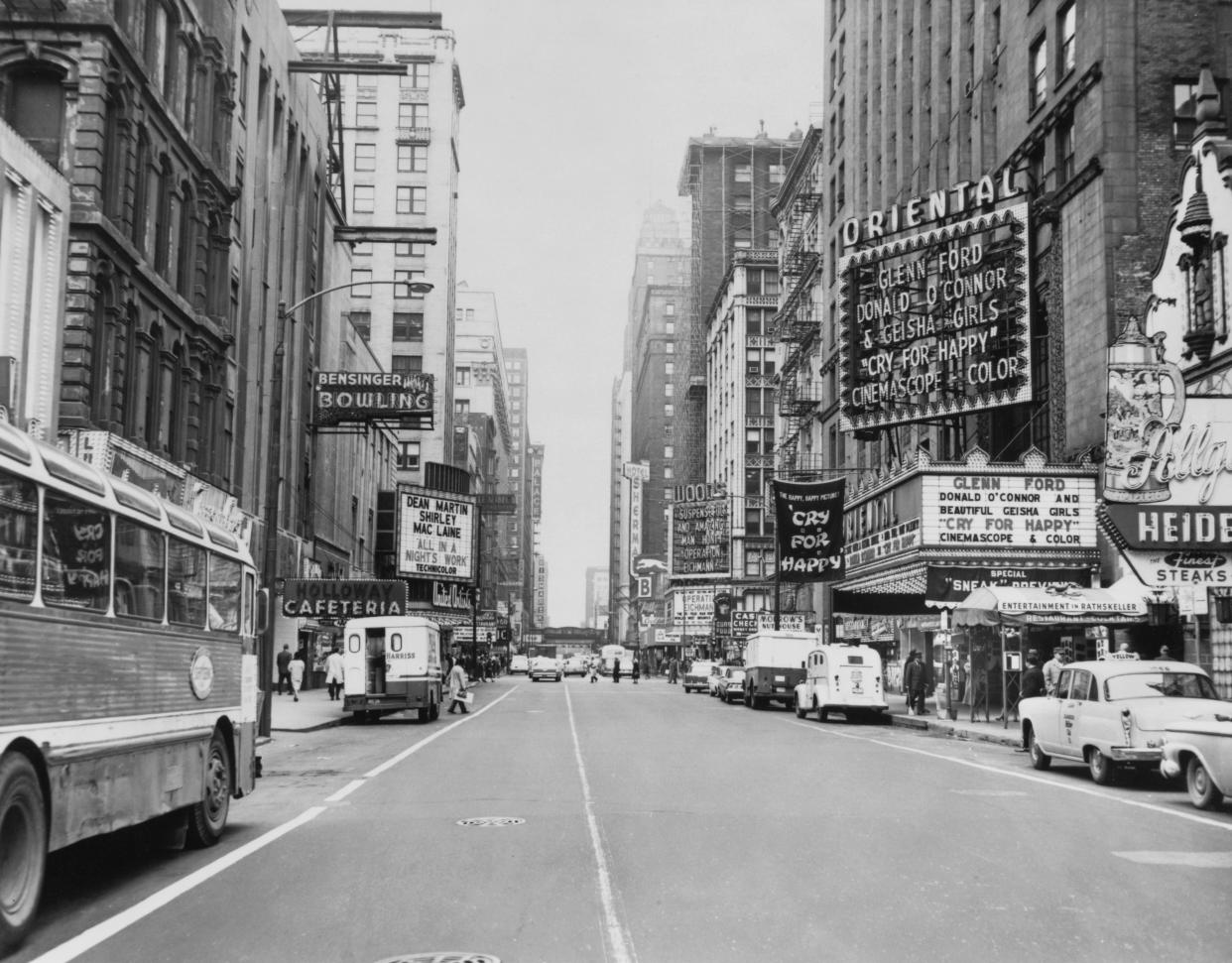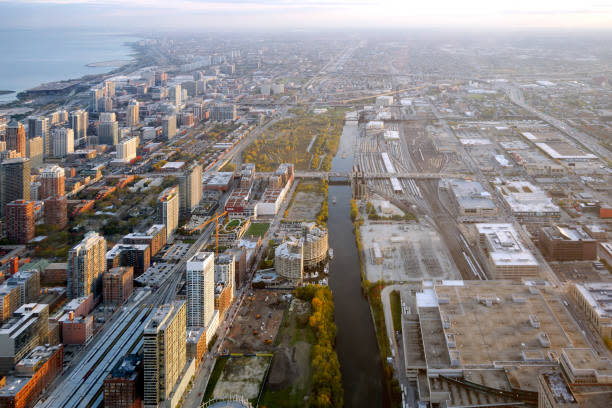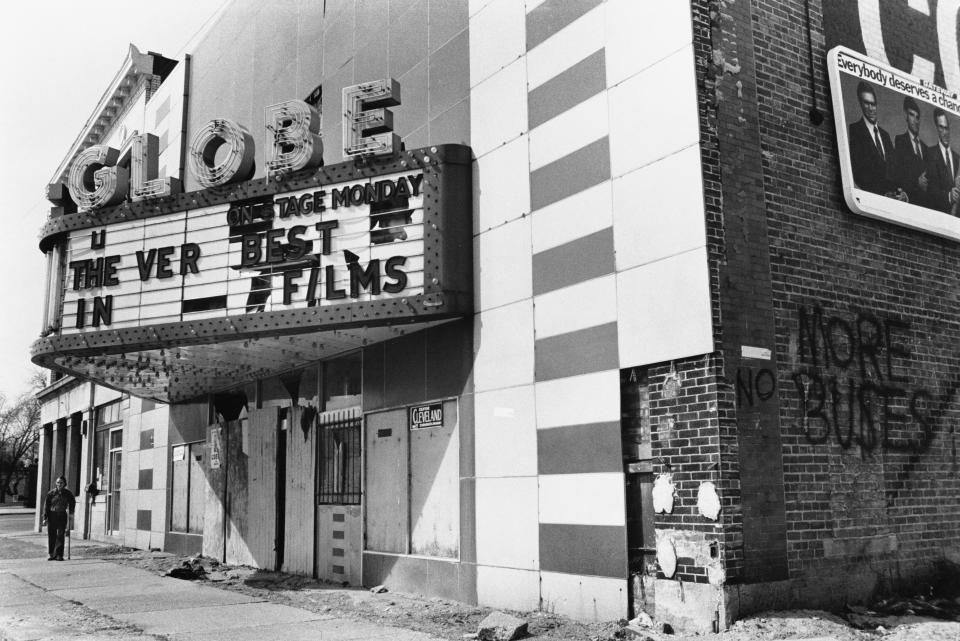As Cinemas Close, America Watches Its Moviegoing Deserts Grow

In Chicago, the country’s third-largest city, around 1.2 million people live on the south side. Until recently, it was served by three movie theaters with 32 screens total, making it an underserved area by industry standards. Today, there are two theaters and 18 screens.
Remaining are the AMC Ford City 14 and the four-screen Harper Theater. The just-closed Cinema Chatham 14 was centrally located on a major expressway. It leaves a huge void, particularly for films aimed at the large Black community in adjacent neighborhoods.
More from IndieWire
Mike Nichols Made His Movie Directorial Debut with 'Who's Afraid of Virginia Woolf?' - and Got Fired
Per a statement from Anthony LaVerde, CEO of Emagine Entertainment, the Chatham was no longer “economically viable.” The numbers bear him out: Last year, total U.S./Canada movie ticket spending per capita was around $24 ($9.1 billion tickets sold, population 370 million). On that basis, the South Side, not including the significant suburban draw of the Ford City, should have grossed $25 million; the actual gross for all three theaters was less than $7 million.
Cinema Chatham represents the latest in a disturbing trend of population centers across the country where it’s increasingly difficult to find a nearby multiplex. Much of the press around theater closings focuses on New York and Los Angeles, but far more poisonous to exhibition is the drip, drip, drip of closures of cinema complexes nationwide. When they’re gone, many people have nowhere to watch current movies other than their homes.
New theaters still open or revamping locations, mostly through the efforts of independents or smaller companies like Alamo Drafthouse, which has led the charge (Chicago north side last year; Boston and St. Louis coming soon). Per sources, among the three largest exhibitors only AMC opened a new theater in the last year (the Boston Causeway). Dine-in theaters are appearing in several cities. However, those improvements don’t address the communities where basic moviegoing is no longer readily available.
Through various sources, and with a heavy reliance on local media, IndieWire tracked theater closures that served unique audiences. Pre-COVID, virtually all communities of any size had a first-run multiplex. Today, that’s no longer the case.
The rise in streaming parallels the rise in online shopping (and if Amazon has its way, soon you’ll be able to do both at once). Most theater closures occur in shopping centers, which also continue to suffer a loss of top retail tenants.
Like hospitals, post offices, schools, churches, and parks, theaters make up the fabric of what it means to live in a city or neighborhood. They’re establishments that we take for granted but, as bookstores demonstrated, they can become an endangered species.

Unfortunately, the South Side of Chicago is not unique. Among other cities, large and middle-sized:
Detroit, Michigan (city population: 624,000)
This month saw the closure of the Maple in suburban Bloomfield Township. Another first-run location, the Landmark Main Art in Royal Oaks, closed in 2021. Both were prime specialized locations.
In downtown Detroit, the closest theater is nine miles away and requires crossing an international border. The city’s sole remaining multiplex is the suburban Bel Air Luxury Cinema, about 14 miles from the city proper. Other prime suburban locations are similarly distant.
Milwaukee, Wisconsin (city population: 569,000)
Milwaukee makes seeing current first-run movies for most residents an inconvenience. The city’s last multiplex, the Marcus Southgate Cinema, shut down in September 2023. For many of the city’s residents, the closest multiplexes are more than 10 miles away. Landmark’s two-screen first-run Downer Theater in Milwaukee also closed last September.
Residents in these cities don’t have options within 20 miles:
Grand Island, Nebraska (regional population: 90,000)
The state’s third largest city with a regional population of almost 90,000 saw AMC evicted from its seven-screen theater last spring. There’s one downtown theater, but it shows movies weekends weeks after release. The closest multiplexes are in two smaller neighboring towns — Hastings, Nebraska (26 miles), with two triple-screen theaters often playing the same films, or an eight-screen theater in Kearney, Nebraska (42 miles).
Ashtabula, Ohio (regional population: 100,000)
The largest population center between Cleveland, Ohio and Erie, Pennsylvania lost its last theater when the AMC closed its Ashtabula Mall 6 in July. From town center, it’s 39 miles to the nearest multiplex.
Elkhart, Indiana (city population: 58,000)
Elkhart, the largest city in its county, lost the AMC 14 in December. AMC inherited the lease with its acquisition of Carmike Theaters, but chose not to keep it open. The closest theaters are now in South Bend, Indiana or Goshen, Indiana, which are 30 minutes or more away.

New Haven, Connecticut (city population: 135,000)
With the October 2023 closing of the Bow Tie Criterion 9 in New Haven, the home of Yale University has no theaters. The theater’s programming included current specialized films along with major releases and was a key part of center city entertainment.
The region has other multiplexes, including a Cinemark seven miles away, but the Criterion served a city and campus audience that may not have cars.
Other cities or regions (population: over 50,000)
Other areas with county or regional populations of over 50,000 that are now 25 minutes or more from a multiplex include Orangeburg, South Carolina (50 miles, county of 90,000); Yucca Valley, California; Lincolnton, North Carolina; and Stonecrest, Georgia.
Smaller towns now far away from theaters include Centralia, Illinois (20 miles); Rutland, Vermont (48 miles); and Clarion, Pennsylvania (37 miles).
Best of IndieWire
The Best LGBTQ Movies and TV Shows Streaming on Netflix Right Now
Guillermo del Toro's Favorite Movies: 54 Films the Director Wants You to See
Nicolas Winding Refn's Favorite Films: 37 Movies the Director Wants You to See
Sign up for Indiewire's Newsletter. For the latest news, follow us on Facebook, Twitter, and Instagram.

